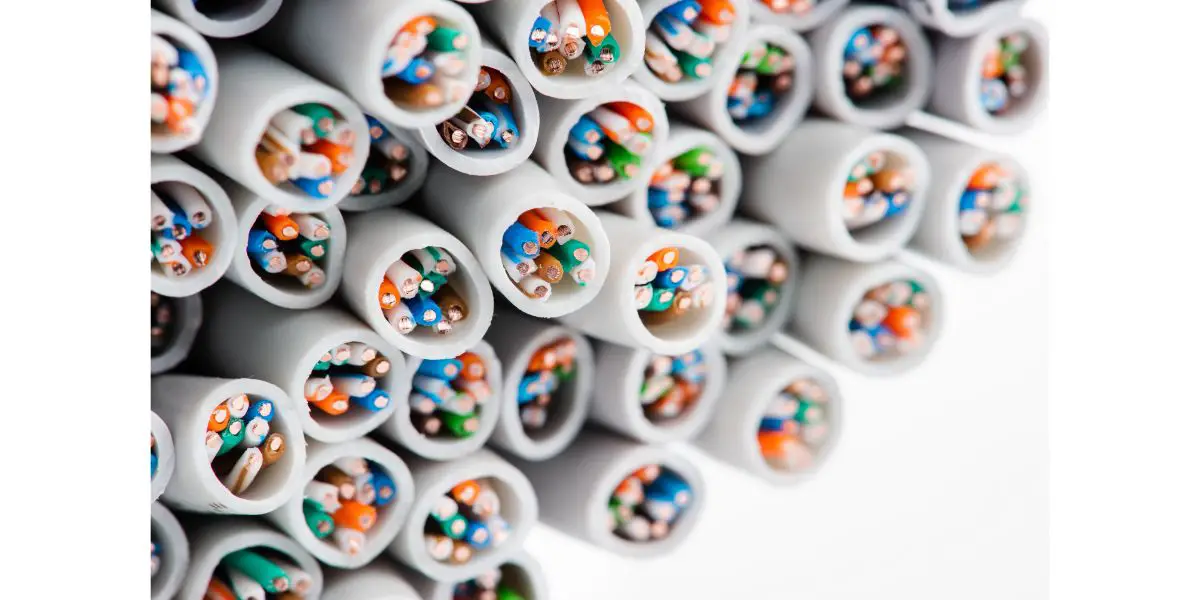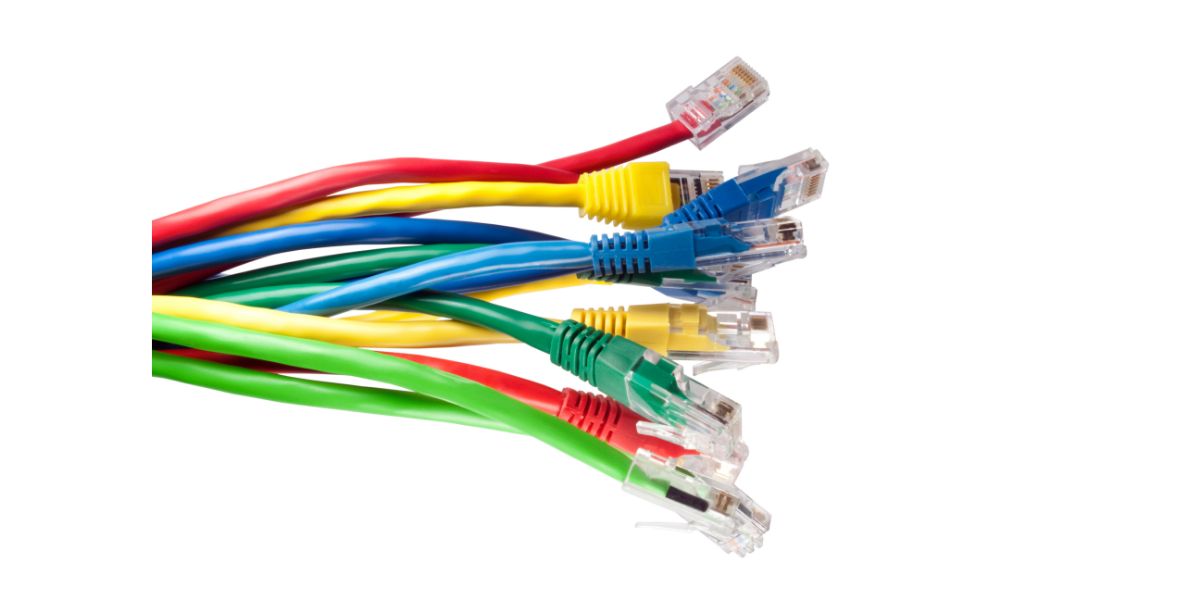Disclaimer: This post may contain affiliate links, meaning we get a small commission if you make a purchase through our links, at no cost to you. For more information, please visit our Disclaimer Page.
Even though more people use WiFi, Ethernet is still commonly used because it provides more speed and security. If you’re using Ethernet, you’ll need an Ethernet cable typically made of eight cables. What are these cables, and are they all necessary?
Table of Contents
Does an Ethernet Cable Need All 8 Wires?
Inside a typical ethernet cable, eight different wires are twisted into pairs. These four pairs have different colors, so technicians can tell them apart, with half being white and the rest being a mix of white and orange, green, brown, and blue.
These cables are called Cat 5 and were the most common Ethernet cables in the past.
The Cat 5 Ethernet cables were introduced in 1995, while the Cat 5e specification came around 2001. Understandably, they were designed when internet speeds were still pretty low, so they were dual-rated at 10 or 100 Mbps with a bandwidth of 100 MHz.
This type of connection only requires two out of four pairs of wires: one pair to receive and another to transmit information.
1000BASE-T Ethernet, becoming the most common connection today, requires all four pairs of wires, or eight wires in total. This type of Ethernet has a speed of 1000 Mbps, and each wire can transmit and receive information at much higher speeds.
Previously, only four wires were used, typically the 1, 2, 3, and 6 ports. The rest of the wires could be used for the telephone, but some did use them to create a second 10BASE-T or 100BASE-T connection.
However, this latter option was not recommended because its speed was limited and the connection was not as strong.
Given that only two pairs or four wires were needed then, how come manufacturers decided to use eight? Ethernet cable manufacturers could envision higher internet speeds in the near future, so they made a cable that would stand the test of time.
This decision was the right one, given what we know right now and the technology we have.
What Difference Do Four Extra Wires Make?
The type of cable you have doesn’t affect your internet speed directly. Your Ethernet cable is simply a tool that sends and receives signals using the internet, while your internet provider is the factor that decides how fast your internet is.
Depending on the Ethernet cable you choose, you may or may not be able to use the speed your internet provider offers.
So, the four extra or four fewer wires won’t make a difference if you have a limited internet speed. However, if you can access relatively high-speed internet, which most people do, you’ll need four pairs of wires to use this speed.
Think of the wires as lanes on a highway. Two more pairs mean two more lanes that can handle much more traffic more easily.
A 10 or 100BASE-T connection only needs two pairs of wires, or two lanes, because the amount of traffic it allows is much smaller. On the other hand, a 1000BASE-T Ethernet interface can allow much more data to be received and transmitted at a time, so it needs four lanes, or four pairs of wires to function normally.
What Does Each Wire Do?
In a 10 or 100BASE-T interface, four wires or two pairs are enough to handle the traffic. In such a connection, each wire has its own function, which means it can transmit or receive signals but can’t do both.
For instance, in an Ethernet cable with colored wires, you can tell which wire does what based on its color:
- The white-green wire transmits data.
- The green wire transmits data.
- The white-orange wire receives data.
- The orange wire receives data.
In other words, the green/white-green pair transmits data, while the orange/white-orange pair receives data. The rest of the wires are unused. However, in a 1000BASE-T Ethernet interface, each wire can transmit and receive data individually, so none have specified functions.
As mentioned above, in the past, people used the remaining four unused wires in a 10 or 100BASE-T interface to create a second connection, splitting the cables manually or buying an Ethernet cable splitter.
Alternatively, the blue/blue-white or brown/brown-white were used for a telephone extension.
Ethernet Cable Categories
I have mentioned two different categories of Ethernet cables so far, namely Cat 5 and Cat 5e, which are technically part of the same category. Cat 5e is simply an improved version of the original one. However, a few more categories precede and succeed these commonly used Ethernet cable types.
Let’s see all the different Ethernet cable categories.
Category 3
Category 3 is the earliest type of Ethernet cable, introduced around the beginning of the 1990s. This type of Ethernet is no longer widely used for internet connections, but it has its own uses in other areas. You can see it in telephone lines, alarm systems, or anything that requires a 10BASE-T connection.
A Cat 3 Ethernet cable could contain two to four pairs of wires. As you can imagine, a four-pair Cat 3 cable only uses two pairs, or four wires, to enable an Ethernet connection.
Category 5
Cat 5 was introduced a few years after Cat 3 and included major improvements that allowed higher internet speeds. It became the standard Ethernet cable for a few years until Cat5e was released.
They have become obsolete because they’re still pretty limited in their abilities and cannot handle the traffic.
Category 5e
Cat 5e is one of the most commonly used Ethernet cables. This particular type of cable contains four pairs of copper wires, twisted around one another, and all wires are used to provide a fast internet connection.
The maximum speed that a Cat 5e can support is 1000 Mbps, which is the current standard for residential users. However, it may not be able to handle larger speeds used for commercial purposes.
Category 6
Cat 6 Ethernet cables were introduced in 2002 to improve the Cat 5e cables. They contain the same number of wires, but they’re more tightly twisted, which can improve the quality of your connection, and can support speeds of up to 10 Gbps.
Category 6a
Cat 6a was released in 2008 and includes certain improvements and additions that make this cable more suitable for high internet speeds for industrial purposes. The number of wires stays the same, but these cables can handle double the bandwidth that Cat 6 can handle.
The A stands for augmented, which indicates the larger capacity of these cables. They are thicker and less flexible than Cat 6 or 5e, which makes these cables perfect for larger industrial uses.
Category 7 and 8
These categories are relatively recent additions that allow significantly higher speeds and have much larger bandwidth than the previous versions. Additionally, they’re designed to be more energy efficient. Understandably, these cables are more expensive than the rest.
Conclusion
Ethernet cables contain four pairs of wires, which they need to be able to handle the traffic of high-speed internet. In the past, only two pairs, or four wires, were used because they could handle the low-speed internet of the past.
The unused wires were typically used for telephone extensions or a second, low-speed Ethernet connection.


